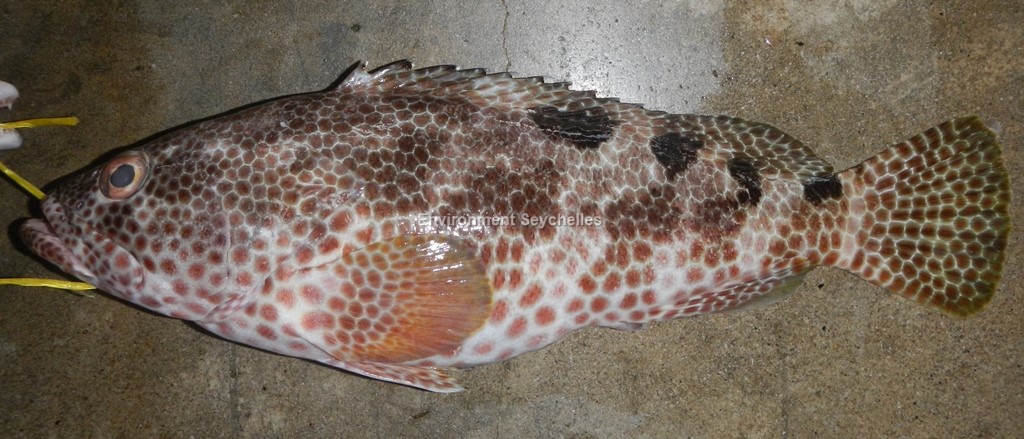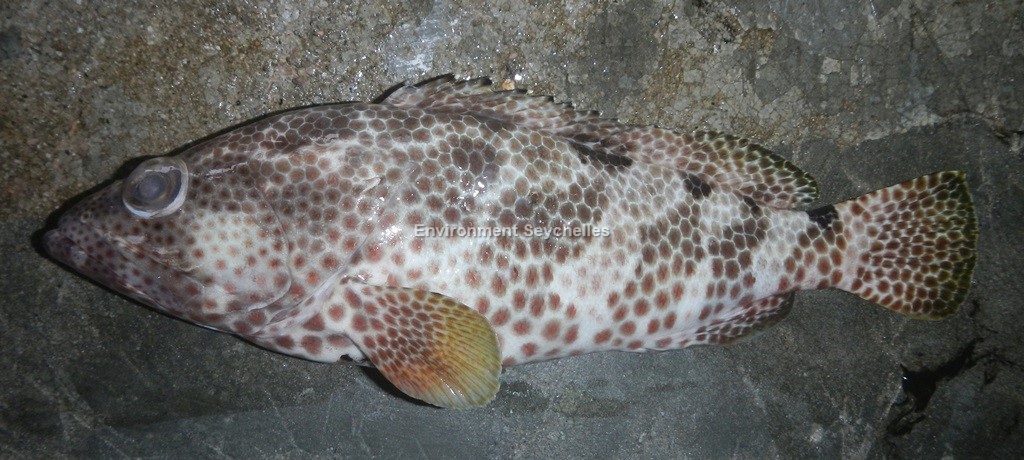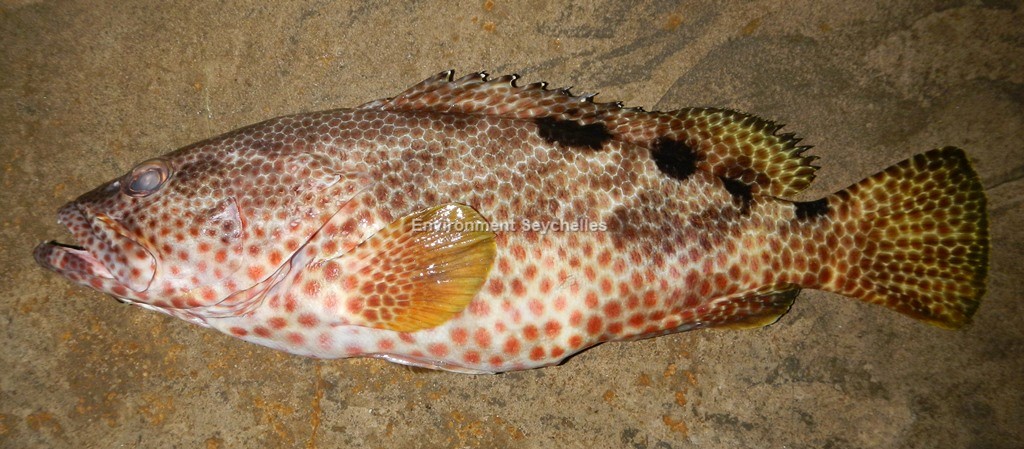Description:
Dorsal spines: 11; Dorsal rays: 14-16; Anal spines: 3; Anal rays: 8.
Small to medium-sized grouper with fusiform body. Posterior and anterior nostrils sub-equal in size; maxilla reaches to or beyond vertical at rear edge of eye; lower jaw
projects in front of upper jaw. Caudal fin rounded.
Colour. Head body and median fins pale cream to off-white, covered with dark brown, brown and reddish brown spots. Dorsolaterally these spots are polygonal and close set, the
interstices forming a pale reticulum, this is particularly apparent on the caudal fin. Spots on the head progressively smaller and darker anteriorly. Spots on the ventral
portions are more rounded, diffuse and redder in colour. Exhibits four distinct, dark blotches. Three at the base of the dorsal fin, the first at the base of the last four
dorsal spines, and a fourth on the caudal peduncle forming a saddle. Blotches formed by adjacent darker spots/polygons may be apparent below the dark dorsal blotches
sometimes merging to give the impression of oblique bars on the flanks. Pectoral fin base and anterior portion with reddish brown spots/polygons, the distal portion a dull
yellowish brown. Tips of dorsal fin spines dark with contrasting white filament.
Size:
Maturity: Lm unknown. Range 19-? cm. Max Length: 35 cm TL.
Habitat and Ecology:
Primarily an insular species, it is found in lagoon reef patches and the upper slopes of channels and reef margins (depth 0-30 m). Carnivorous and solitary. Breeding biology
unknown.
Fishery Status:
This species is not protected or subject to fishery regulations. It is caught in the fish trap and handline fisheries, but is an uncommon component of the catch.
Notes:
The dorsal blotches and saddle serve to differentiate between E. spilotoceps and E. merra, with which it shares the creole name of “Vyey zourit”.
References:
Craig, M.T. et al. (2011). Groupers of the World - a field and market guide. NISC (Pty) Ltd, South Africa. ISBN: 978-1-920033-11-8
Froese, R. & D. Pauly. (Eds.) (2019). FishBase. https://www.fishbase.se/summary/Epinephelus-spilotoceps (06/03/19).
Samoilys, M. (2018). Epinephelus spilotoceps. The IUCN Red List 2018:http://dx.doi.org/10.2305/IUCN.UK.2018-2.RLTS.T132747A100558569.en. (06/03/19).
Citation:
Nevill, J.E.G. (2019). Epinephelus spilotoceps, Foursaddle grouper. Seychelles Seatizens. www.seatizens.sc. https://seatizens.sc/species/epinephelus-spilotoceps-schultz-1953/ (edited 06/08/22).




I value the article.Really thank you! Great.
Thanks so much for the post.Really thank you!
Hey, thanks for the article post. Want more.
Enjoyed every bit of your blog article.Really looking forward to read more. Will read on…